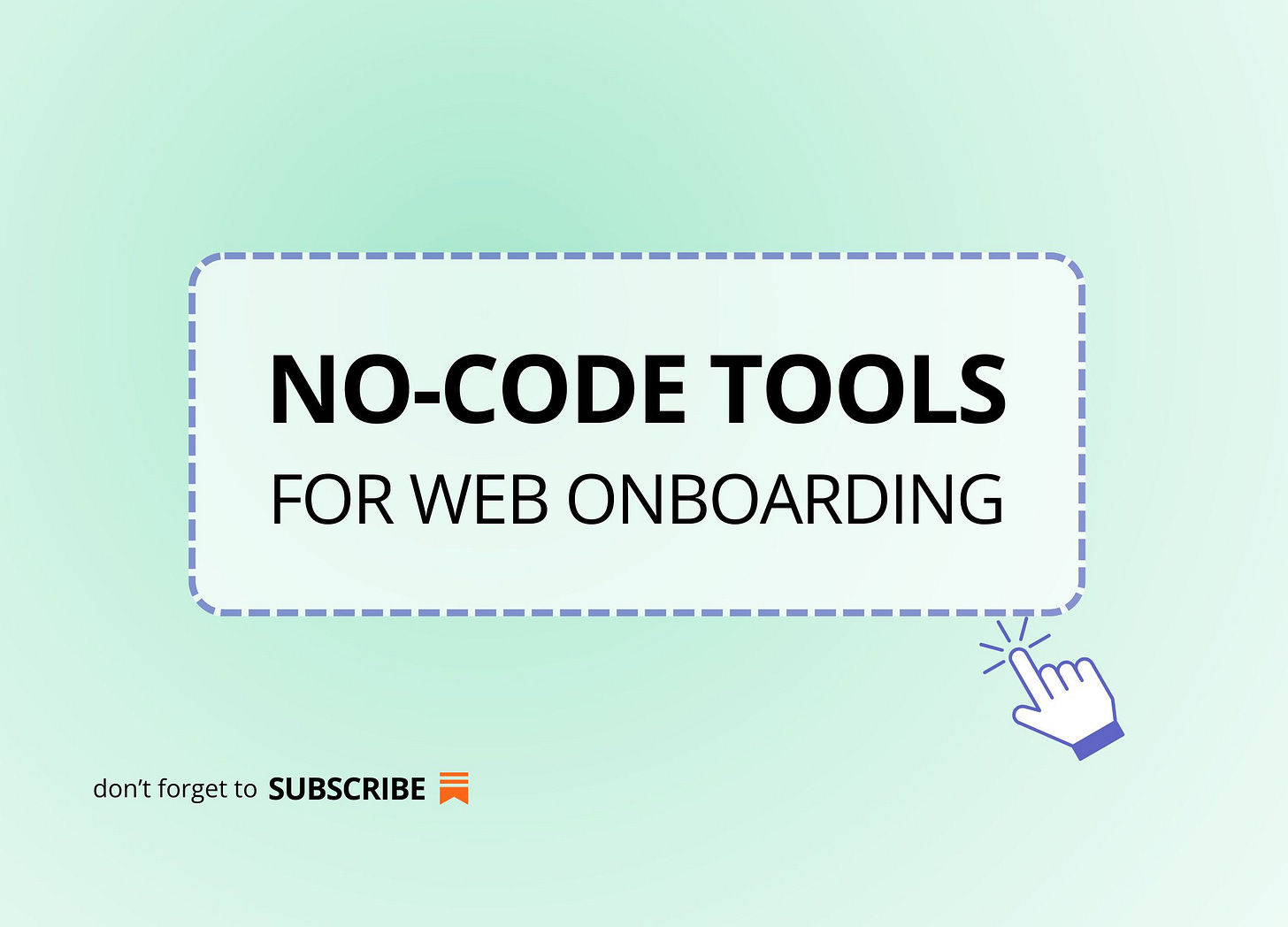(Almost) no-code tools for web onboarding
Building doesn't have to be hard
Web onboarding. We've covered the basics in a previous newsletter - head back two posts to read about what web onboarding is and why you might need one.
TL;DR: Web onboarding is a user acquisition channel, a quiz, a flow, a funnel -where users decide if your product is worth their time and (hopefully) convert. A good onboarding funnel means better retention, higher conversions, and fewer drop-offs.
The challenge? Building it from scratch takes time, money, and more money developers.
The potential solution? No-code tools that can help you (in)validate your funnel before investing in an in-house build.
When to use a no-code onboarding tool
If you're in the early stages of testing your onboarding funnel, a no-code tool can help you:
✅ Launch quickly—without waiting for dev resources
✅ Test different flows and messaging
✅ Get user feedback before committing to a full build
✅ Scale faster with built-in templates and integrations
They’re also great if you already have a heavy-weight funnel setup but want to test a new niche or angle quickly without spending months on development.
3 no-code tools to consider
1. FunnelFox – Built by people who understand onboarding inside out, especially for B2C health and wellness. Dynamic pricing based on revenue. Need an intro? DM me.
2. Formsort – Does the job, but the editor isn’t as flexible as you'd expect. In late 2024, they were charging based on flows started, so keep that in mind.
3. Typeform – Great for validation of a flow, get a paid version and you’re ready to go. Noom used it for diabetes pre-onboarding that led to their main flow, and Opal had a great flow - all in Typeform.
And a bonus:
4. Onboarding.online – A fast and easy-to-use no-code tool that integrates with web and iOS products.
Looking for more? If you refer 3 people to sign up for my newsletter, I’ll send you a curated list of 10 powerful tools to improve your onboarding flows - because having more options means you can find the perfect fit for your product and users.
In-house vs. no-code: what’s the tradeoff?
No-code tools buy you time and flexibility. They let you test, iterate, and improve. But if you need deep customization and have the resources, building in-house makes sense long-term.
Here’s a quick breakdown (based on my experience and what people in my network said):
✅ No-code tools: Faster launch, lower cost, great for validation.
❌ No-code tools: Less control, may not scale as well, gets expensive as you grow.
✅ In-house build: Fully customized, scalable.
❌ In-house build: Takes time (months), requires budget and developers.
Beyond the tools
Most importantly, tool buy you time. You hire them to speed you up so you (in)validate your hypotheses faster.
Tools are enablers - they won’t fix a bad funnel or solve all your conversion issues on their own. The real impact comes from what you put into the funnel: the messaging, the tactics, the user journey (DM me if you're looking for onboarding advice).
As always, thanks for reading and subscribing! Until the next one.



